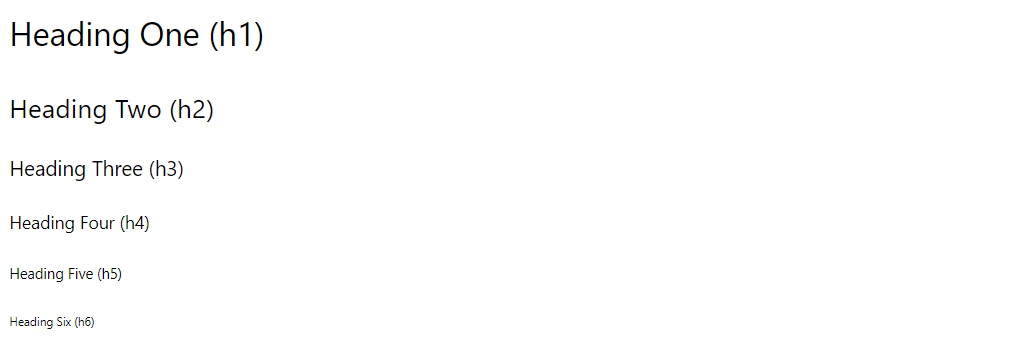Markdown is a set of simple conventions for formatting text on GitHub. It makes it easy to create professional documents with minimal effort.
Here are the most useful formatting rules for Markdown:
TOPICS
# Heading One (h1)
## Heading Two (h2)
### Heading Three (h3)
#### Heading Four (h4)
##### Heading Five (h5)
###### Heading Six (h6)

Text Style
With Markdown, it is possible to emphasize words by making them *italicized*, using *astericks* or _underscores_, or making them **bold**, using **double astericks** or __double underscores__.
Of course, you can combine those two formats, with both _**bold and italicized**_ text, using any combination of the above syntax.
You can also add a strikethrough to text using a ~~double tilde~~.
With Markdown, it is possible to emphasize words by making them italicized, using astericks or underscores, or making them bold, using double astericks or double underscores.
Of course, you can combine those two formats, with both bold and italicized text, using any combination of the above syntax.
You can also add a strikethrough to text using a double tilde.
Lists
Unordered
* First item
* Second item
* Third item
* First nested item
* Second nested item
- First item
- Second item
- Third item
- First nested item
- Second nested item
Ordered
1. First item
2. Second item
3. Third item
1. First nested item
2. Second nested item
- First item
- Second item
- Third item
- First nested item
- Second nested item
Hyperlinks
Create links by wrapping the link text in square brackets [ ], and the URL in adjacent parentheses ( ).
[Google News](https://news.google.com)
Google News
Images
Insert images in a similar way, but add an exclamation mark in front of square brackets ![ ], and the image file name goes in the parentheses ( ).

The alt text appears when the image cannot be located, or is read by devices for the blind when the mouse hovers over the image. It
It is common practice to place all of the image files in an “assets” or “images” folder to keep your directory tidy. You can reference files inside a folder using the folder name and the forward slash:


Or you can link directly to an image online using the URL address of the image:


Tables
| Title 1 | Title 2 | Title 3 | Title 4 |
|------------------|------------------|-----------------|-----------------|
| First entry | Second entry | Third entry | Fourth entry |
| Fifth entry | Sixth entry | Seventh entry | Eight entry |
| Ninth entry | Tenth entry | Eleventh entry | Twelfth entry |
| Thirteenth entry | Fourteenth entry | Fifteenth entry | Sixteenth entry |
| Title 1 |
Title 2 |
Title 3 |
Title 4 |
| First entry |
Second entry |
Third entry |
Fourth entry |
| Fifth entry |
Sixth entry |
Seventh entry |
Eight entry |
| Ninth entry |
Tenth entry |
Eleventh entry |
Twelfth entry |
| Thirteenth entry |
Fourteenth entry |
Fifteenth entry |
Sixteenth entry |
Blockquotes
Single line
> My mom always said life was like a box of chocolates. You never know what you're gonna get.
My mom always said life was like a box of chocolates. You never know what you’re gonna get.
Multiline
> What do you get when you cross an insomniac, an agnostic and a dyslexic?
>
> Someone who stays up all night wondering whether there really is a dog.
>
> – _Hal Incandenza_
What do you get when you cross an insomniac, an agnostic and a dyslexic?
Someone who stays up all night wondering whether there really is a dog.
– Hal Incandenza
Horizontal Rule